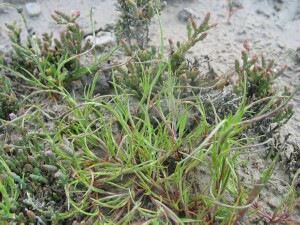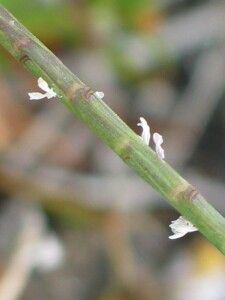Coast Barb-grass
Back | Salinity Indicator Plants Home | Common name home | Scientific name home | Photo Gallery | Glossary
| Coast Barb-grass photos | Family: Grass (Poaceae syn. Gramineae) |
| Scientific Name: | Parapholis incurva | 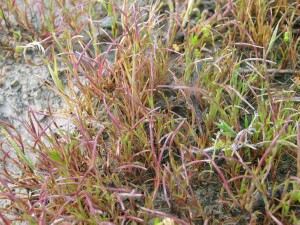 Coast Barb-grass Coast Barb-grassPhoto: A J Brown | ||||||||
Other Common Names: | Curly Rye-grass, Curved Hard-grass, Sickle Grass | |||||||||
Status: | Native to the Mediterranean coast and Western Europe. Naturalised to the Americas, South Africa, India, New Zealand and the southern states of Australia. | |||||||||
Plant Description: | Low growing, tufted, sprawling, annual grass. The leaves are flat or incurved, smooth on the under surface and rough on the upper and up to 6 cm long but often reduced to short points on the sheath. Flower-heads are long and curved, cylindrical spikes to 10 cm long with small florets (individual flowers) embedded in the stem (rachis) so that they appear to be part of it. Each floret is enclosed by a pair of thin outer husks or glume. Spikes commonly turn red or brown with maturity and particularly under drought or salinity stress. Flowers in spring. | |||||||||
Habitat: | In soils ranging from loams to clay loams and clays, more abundant on clays.
| |||||||||
Comments: | Found on areas subject to flooding for part of the year. An important colonizer of saline depressions and can be abundant in some areas, particularly where there is high winter rainfall. Short growing period. Very similar to Slender Barb-grass (Parapholis strigosa) and Common Barb-grass (Hainardia cylindrica) which also grow in saline environments. A simplified key to the Barb-grasses can be accessed here – Key to Barb-grasses. | |||||||||
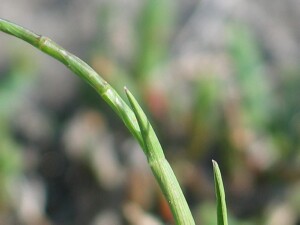 Coast Barb-grass - spike with an open glume Photo: A J Brown | 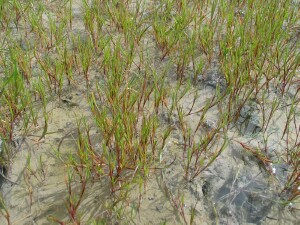 Coast Barb-grass growing in water Photo: A J Brown |
|
|

